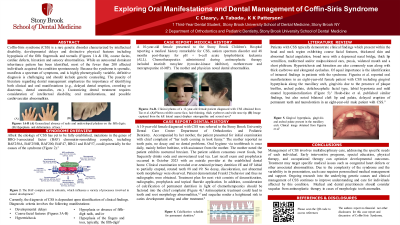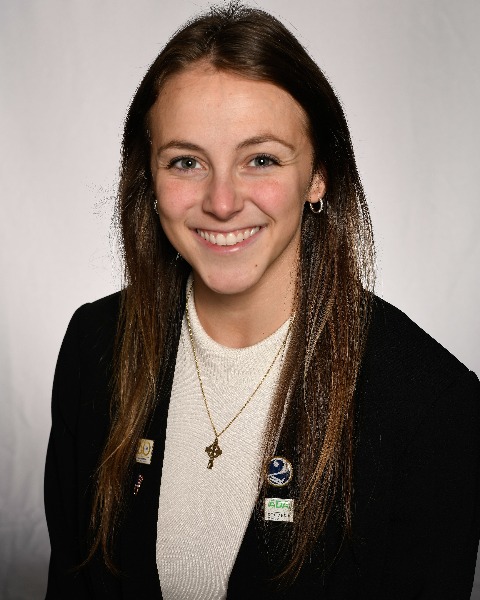Syndromes/Craniofacial Anomalies
390 - Exploring Oral Manifestations and Dental Management of Coffin-Siris Syndrome


Cailin Cleary, BS
Third Year Dental Student
Stony Brook University School of Dental Medicine
Stony Brook University School of Dental Medicine
Massapequa, New York, United States- AT
Alonzo Tabada, BE
Stony Brook University School of Dental Medicine
- KP
Kimberly Patterson, DDS, MS
Clinical Associate Professor, Program Director
Stony Brook University School of Dental Medicine
Stony Brook, New York, United States
Presenting Author(s)
Co-Author(s)
Program Director(s)
Case report: A 10-year-old female presented to the Stony Brook University Dental Care Center with medical history including Coffin-Siris syndrome, autism spectrum disorder, and 48 months post-therapy for pH + B Cell Acute Lymphoblastic Leukemia (ALL). Chemotherapeutics administered during antineoplastic therapy included imatinib mesylate (tyrosine-kinase inhibitor), methotrexate and mercaptopurine (6-MP). Parent and physician noted malformation and malalignment of erupting permanent teeth. Literature review and oral rehabilitation of anomalous dentition in the context of Coffin-Siris syndrome and chemotherapeutic effects are presented.
Introduction: Coffin-Siris syndrome (CSS) is a rare genetic disorder characterized by intellectual disability, developmental delays, and distinctive physical features including hypoplasia of the fifth fingernails and toenails, coarse facies, cardiac defects, hirsutism and sensory abnormalities. While an autosomal dominant inheritance pattern has been identified, most of the fewer than 200 affected individuals acquired the condition spontaneously. Because the syndrome is sporadic, manifests a spectrum of symptoms, and is highly phenotypically variable, definitive diagnosis is challenging and should include genetic counseling. The paucity of literature regarding dental management emphasizes the importance of identifying both clinical and oral manifestations (e.g., delayed dental eruption, crowding or diastemas, dental anomalies, etc.). Customizing dental treatment requires consideration of intellectual disability, oral manifestations, and possible cardiovascular abnormalities.
Identify Supporting Agency and Grant Number:

.jpg)